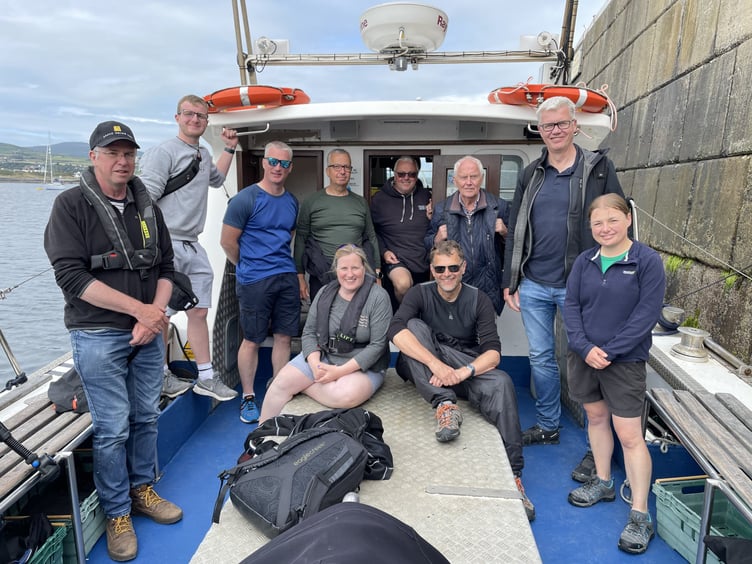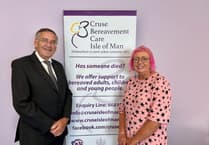A dive team from the Isle of Man has helped a German family to pay their respects to their relative who died at sea during the Second World War.
Joseph Schroer and his son Josef travelled from their home in Germany to pay respect to Joseph’s great uncle, Engineer Johannes Hüls, who was one of the crew members of U-246, a lost submarine 24 miles off the island’s coast. He was 32 when he died.
U-246 is one of two German submarine wrecks from which the nearest landmass is the island.
The other, U-1024, was recently rediscovered by a survey ship operating out of Douglas, as it carried out mapping for planned wind farms.
During the war, the family were only told that their relative was lost in the Irish Sea but no further information.
It took Josef some research to find out the truth of what happened.
In March 1945 U-246 was on patrol in the Irish Sea on only her second voyage.
The ship encountered a British anti-submarine warfare trawler HMS Lady Madeleine (operating out of Fleetwood) which opened fire and sank the submarine with her crew of 48, who remain entombed inside 50 metres underwater. A few weeks later, a sonar trace of the wreck was found and it was depth charged which released some personal items from within the pressure hull – including a sock labelled with a German surname – suggesting it was U-246.
It was standard practice for naval ships to depth charge any sonar pings, even if the source was not moving – because U-boats that were being hunted would often lie stationary near the seabed to imitate a wreck and escape.
Discover Diving took Josef and Joseph out to the wreck site with the team.
The wreck was located a short distance from the published location and the dive team carried memorial plaques to attach to the wreck on behalf of the family.
The divers were Leigh Morris, Dave Copley, Colin Peters, Kathryn Fowler and Steve Cowley.
Rhys Burrell acted as deck crew.
Due to the depth of the dive, the divers breathed gas mixes including helium to reduce the narcotic impact of breathing compressed air at depth. Diving Officer (and Rushen MHK) Michelle Haywood explained: ‘This is technical diving, beyond the normal recreational scuba.
‘The divers in the team were hand-picked volunteers who have considerable experience diving at these depths.
‘Use of helium in the gas they are breathing means that they can think clearly, and that was a massive factor in keeping everyone safe while we completed the survey and attached the plaques.’
One included a quote from John F Kennedy: ‘Mankind must put an end to war, or war will put an end to mankind.’
Five divers in two teams entered the water and the dives lasted over 90 minutes due to the need to slowly return to the surface to avoid decompression sickness.
Once all the divers were safely recovered, they reported that plaques had been attached, one near the propeller and one to the conning tower. Visibility on the dive was excellent and the divers were able to identify a number of features that confirmed the identity of the wreck as U-246.
Damage from the two depth-charge attacks could be seen, for example.
Identification was aided by a schematic of the same class of U-boat provided by Adrian Corkill, author of the Shipwrecks of the Isle of Man.
The family laid a biodegradable wreath over the wreck site and a minute’s silence was held before the dive boat returned to Port St Mary.




.jpeg?width=209&height=140&crop=209:145,smart&quality=75)
Comments
This article has no comments yet. Be the first to leave a comment.